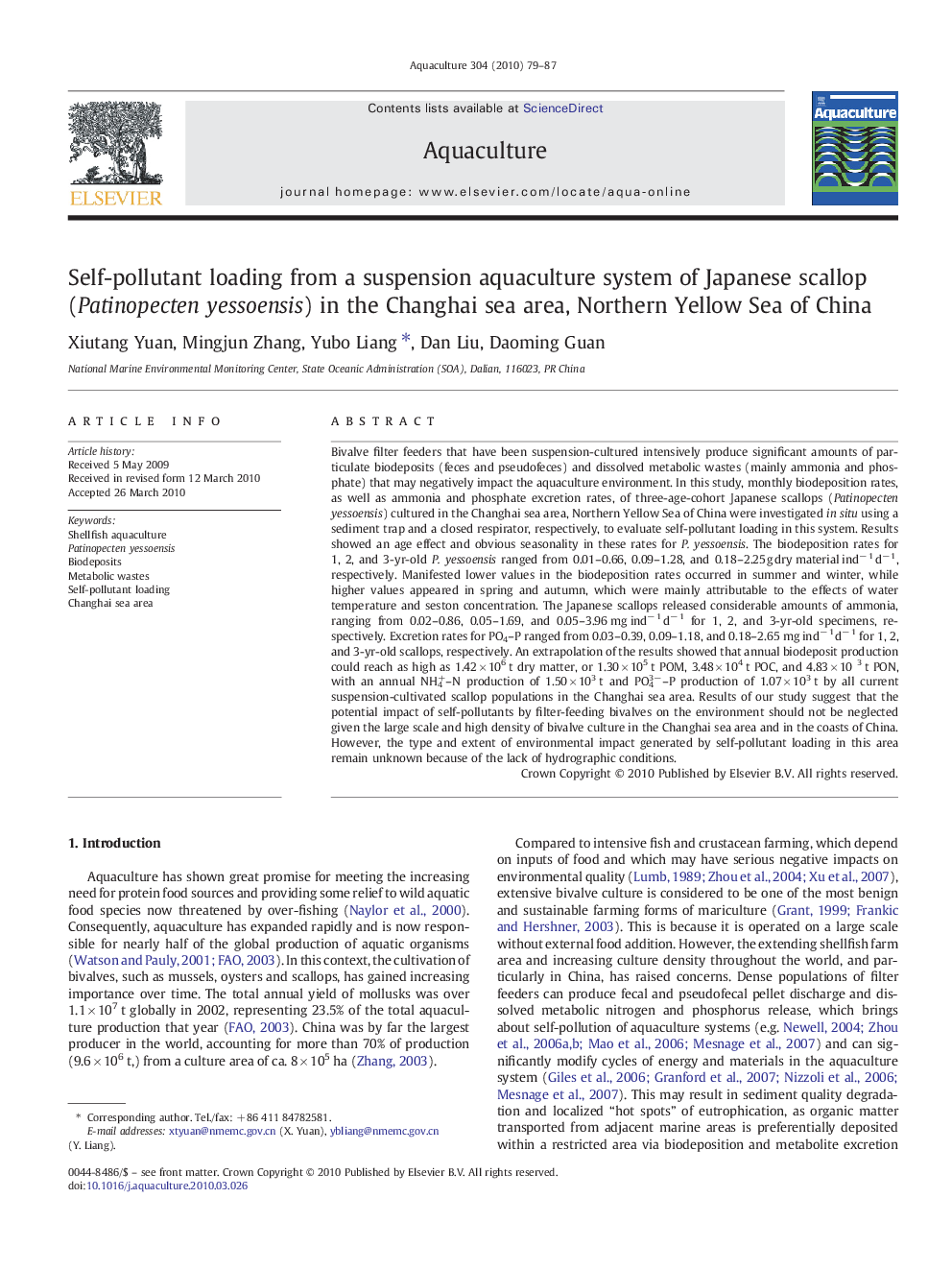| کد مقاله | کد نشریه | سال انتشار | مقاله انگلیسی | نسخه تمام متن |
|---|---|---|---|---|
| 2423648 | 1552924 | 2010 | 9 صفحه PDF | دانلود رایگان |

Bivalve filter feeders that have been suspension-cultured intensively produce significant amounts of particulate biodeposits (feces and pseudofeces) and dissolved metabolic wastes (mainly ammonia and phosphate) that may negatively impact the aquaculture environment. In this study, monthly biodeposition rates, as well as ammonia and phosphate excretion rates, of three-age-cohort Japanese scallops (Patinopecten yessoensis) cultured in the Changhai sea area, Northern Yellow Sea of China were investigated in situ using a sediment trap and a closed respirator, respectively, to evaluate self-pollutant loading in this system. Results showed an age effect and obvious seasonality in these rates for P. yessoensis. The biodeposition rates for 1, 2, and 3-yr-old P. yessoensis ranged from 0.01–0.66, 0.09–1.28, and 0.18–2.25 g dry material ind− 1 d− 1, respectively. Manifested lower values in the biodeposition rates occurred in summer and winter, while higher values appeared in spring and autumn, which were mainly attributable to the effects of water temperature and seston concentration. The Japanese scallops released considerable amounts of ammonia, ranging from 0.02–0.86, 0.05–1.69, and 0.05–3.96 mg ind− 1 d− 1 for 1, 2, and 3-yr-old specimens, respectively. Excretion rates for PO4–P ranged from 0.03–0.39, 0.09–1.18, and 0.18–2.65 mg ind− 1 d− 1 for 1, 2, and 3-yr-old scallops, respectively. An extrapolation of the results showed that annual biodeposit production could reach as high as 1.42 × 106 t dry matter, or 1.30 × 105 t POM, 3.48 × 104 t POC, and 4.83 × 10 3 t PON, with an annual NH4+–N production of 1.50 × 103 t and PO43−–P production of 1.07 × 103 t by all current suspension-cultivated scallop populations in the Changhai sea area. Results of our study suggest that the potential impact of self-pollutants by filter-feeding bivalves on the environment should not be neglected given the large scale and high density of bivalve culture in the Changhai sea area and in the coasts of China. However, the type and extent of environmental impact generated by self-pollutant loading in this area remain unknown because of the lack of hydrographic conditions.
Journal: Aquaculture - Volume 304, Issues 1–4, 15 June 2010, Pages 79–87